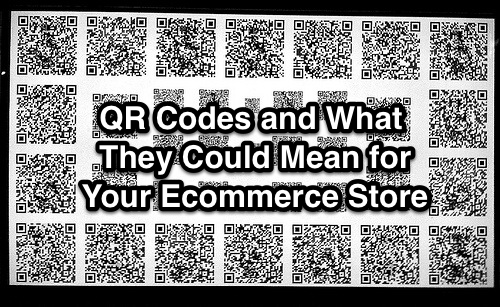
There’s little doubt you’ve seen a QR code, and maybe even used one before on some piece of advertising, whether for a local plumber or a giant retailer. Short for ‘Quick Response,’ QR codes are being used by businesses big and small, and they aren’t going anywhere any time soon.
This article is going to go over what a QR code is and how you can use one to the benefit of your ecommerce page.
What is a QR Code?
A QR code is a 2D image made up of lines, dots and other designs that can be read by smartphones and other devices. You use your camera to scan them and then will be linked directly to a targeted website, a phone number or text.
They originally caught on in Southeast Asia and Japan, where they were initially designed to be an elaborate version of the barcode. However, they are able to contain much more information than barcodes, storing up to just over 7,000 numbers as opposed to the barcodes capacity of 30.
Why Should I Care?
As we move further into the future, we are depending more on our devices and less on traditional methods. According to Pew Research Center, 68 percent of adults have a smartphone, which is up from 35 percent in 2011. That is a sharp increase that is going to continue trending as more and more services become available online-only.
There is also a ton of unlocked marketing potential inside QR codes. When you see them, they are kind of a mystery — where will one take you? Most likely it’ll take you to a page with some coupons and some ad copy, but there is a lot of untapped possibility there.
How Do I Make a QR Code?
Thankfully, you don’t actually have to design a code yourself to have one for your ecommerce store. There are a number of places online that will create one for you:
You can usually have them made in different sizes or use alternate formats, like HTML code, TIFF files, PNG, SVG and EPS.
Where Should I Put Them Now That I Have One?
They are best utilized in print media or a similar format. Somewhere analogue that will pull the user into the digital place—like your ecommerce page. For example, you could put one on a clothes tag and it will link to a group of people modelling that outfit (which is only available through your ecommerce store).
All ecommerce website builders will have a function for you to upload pictures or videos that the QR code will be able to direct them towards.
If you are currently employing a print advertising strategy, try throwing a QR code on to the advertisement and have it link to some coupons or other deals related to your service.
As a general rule of thumb, it’s best to think of them as ‘fancy barcodes’ since they haven’t quite caught on everywhere yet. Like all fresh ideas in the world, they need some pioneering, time and creativity to make sure they have a successful deployment at your organization.
If used effectively, a well-coordinated QR campaign can help raise awareness of your brand and build traffic to your ecommerce store. To get you started or optimize your existing QR code campaign, here are 8 tips for using QR codes in marketing.
Image Credit: Bert Kimura

